Asus A8R32-MVP Deluxe: First ATI RD580
by Wesley Fink on March 1, 2006 9:00 AM EST- Posted in
- Motherboards
Basic Features: Asus A8R32-MVP
The BIOS adjustments of the A8R-MVP were a pleasant surprise for a low-end board, but they were not as extensive as those seen on top-end Asus boards like the 8-phase A8N32-SLI. The BIOS for the A8R32-MVP is very complete, and does not really have any Asus high-end adjustments missing at all. The available adjustment ranges have been improved over the available options on the A8R-MVP, and Asus has added more options for processor and chipset voltages.
The RD480-based Asus A8R-MVP has a very wide range of overclocking controls for a board in the $100 price range, but it is weak in voltage adjustments and memory Command Rate settings. The RD580-based A8R32MVP, for the most part, corrects those deficiencies by providing finer adjustments, a larger number of BIOS-adjustable voltages, and higher vCore settings. Most users will be pleased with the additions and refinements. The A8R32-MVP stands up well against just about any overclocking board available in terms of the available overclocking options and the range of control available. The Asus designers did an excellent job of listening to buyers of the earlier A8R-MVP and adding the most asked-for improvements.
| Asus A8R32-MVP Deluxe | |
| CPU Interface | Socket 939 Athlon 64 |
| Chipset | ATI RD580 Northbridge - ULi M1575 Southbridge |
| Bus Speeds | 200 to 400MHz in 1MHz Increments |
| Memory Speeds | DDR200,266,333,366,400 (433,466,500 with Rev. E AMD) |
| PCIe Speeds | 100 to 150MHz in 1MHz Increments |
| PCI/AGP | Fixed at 33/66 |
| Core Voltage | Auto, 0.8V to 1.4V-1.55V* in 0.025V increments PLUS 0.1V & 0.2V with vCore Over-Voltage (Maximum vCore 1.6V to 1.75V) *Max Voltage depends on CPU ID. To 1.55V with Clawhammer |
| CPU Clock Multiplier | 4x-25.5x in 0.5X increments |
| DRAM Voltage | Auto, 2.6V to 3.2V in .05V increments |
| HyperTransport Frequency | 1000MHz (1GHz) (Stable in overclocking to 1500+ HT) |
| HyperTransport Multiplier | Auto, 1X to 5X |
| Northbridge Over-Voltage | Auto, Disabled, Enabled Enabled adds 3 New Voltage Options Below |
| Core Voltage | 1.2V, 1.3V, 1.4V, 1.5V |
| HyperTransport Bus Voltage | 1.2V, 1.3V, 1.4V, 1.5V |
| PCI Express Voltage | 1.2V, 1.3V, 1.4V, 1.5V |
| Southbridge Overvoltage | Auto, Disabled, Enabled (+0.1V) |
| PEG Link Mode | Auto, Disabled, Normal, Fast, Faster |
| PEG Buffer Length | Auto, Short, Long, Longer, Longest |
| AI Overclocking | Manual, Auto*, Standard*, Overclock Profile**, AI N.O.S.** *CPU Frequency and Other OC Parameters Set Automatically **Manually Set CPU Frequency and Other Parameters Auto Adjust |
| Overclock Profile Options | OC 3%, 5%, 10%, 15%,20%,30% |
| AI N.O.S. Options | OC 3%, 5%, 7%, 10%, 15%, 20% |
| Memory Slots | Four 184-pin DDR DIMM Slots Dual-Channel Configuration Regular Unbuffered or ECC Memory to 4GB Total |
| Expansion Slots | 2 PCIe x16 1 PCIe x1 3 PCI Slots |
| Onboard SATA/RAID | 4 SATA2 Drives by ULi M1575 (RAID 0,1,1+0,5,JBOD) PLUS 2 SATA2 Drives by Silicon Image 3132 (RAID 0,1) |
| Onboard IDE/IDE RAID | Two Standard ATA133/100/66 (4 drives) |
| Onboard USB 2.0/IEEE-1394 | 8 USB 2.0 ports supported by ULi M1575 2 Firewire by TI 1394a |
| Onboard LAN | PCIe Gigabit by Marvel Yukon 88E8053 PCI Gigabit by Marvel 88E8001 |
| Onboard Audio | Azalia HD Audio by Realtech ALC882 codec |
| BIOS Revision | AMI 307 (2/15/06) |
The BIOS adjustments of the A8R-MVP were a pleasant surprise for a low-end board, but they were not as extensive as those seen on top-end Asus boards like the 8-phase A8N32-SLI. The BIOS for the A8R32-MVP is very complete, and does not really have any Asus high-end adjustments missing at all. The available adjustment ranges have been improved over the available options on the A8R-MVP, and Asus has added more options for processor and chipset voltages.
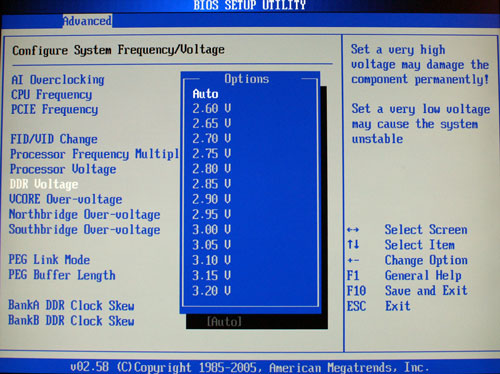
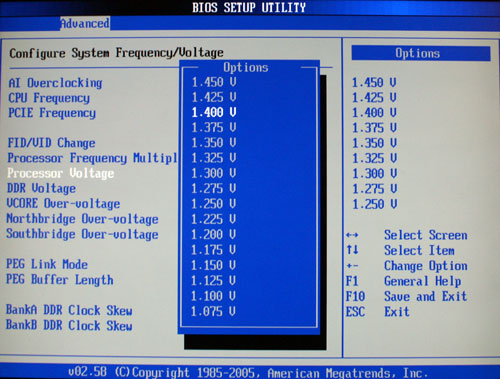
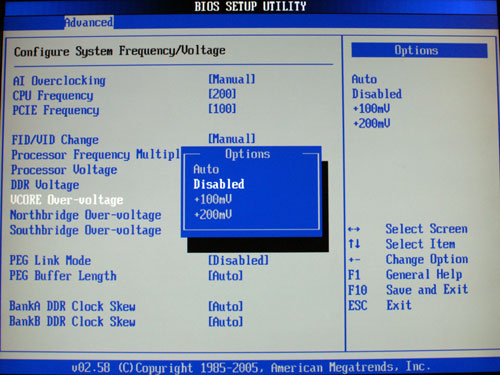
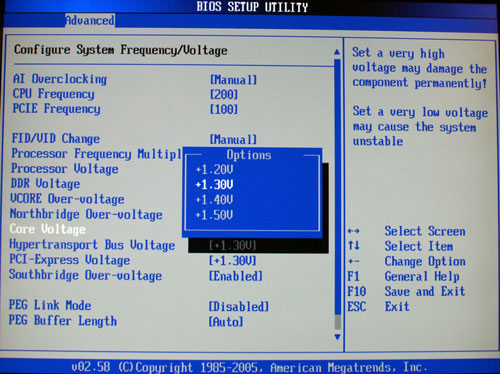
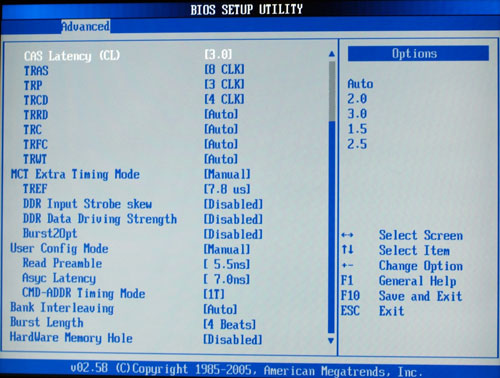
The RD480-based Asus A8R-MVP has a very wide range of overclocking controls for a board in the $100 price range, but it is weak in voltage adjustments and memory Command Rate settings. The RD580-based A8R32MVP, for the most part, corrects those deficiencies by providing finer adjustments, a larger number of BIOS-adjustable voltages, and higher vCore settings. Most users will be pleased with the additions and refinements. The A8R32-MVP stands up well against just about any overclocking board available in terms of the available overclocking options and the range of control available. The Asus designers did an excellent job of listening to buyers of the earlier A8R-MVP and adding the most asked-for improvements.










65 Comments
View All Comments
ocyl - Wednesday, March 1, 2006 - link
Page 4 mentions that there is an Asus board called "A8N32-MVP." Does anyone know where to find more information about this board, if it does exist?Gary Key - Wednesday, March 1, 2006 - link
It should have read A8N32-SLI and has been corrected. Thank you.Darthb0b0 - Wednesday, March 1, 2006 - link
I'd like to see numbers of both X1800 and X1900 Crossfire, on both the A8R and A8R32 (four sets of numbers for those who are math impaired). I am much more interested in how this new board, and its price premium, affect Crossfire performance.nicolasb - Wednesday, March 1, 2006 - link
Can we have some comparable benchmarks for 7800GTX 512 as well as 7800GTX? And 7800GTX 512 in SLI mode too.whippingboy79 - Wednesday, March 1, 2006 - link
**"The NVIDIA 7800GTX and ATI X1900XT are readily available for purchase in the marketplace. Since the 7800GTX 512 is not available for sale anywhere and has not been available for weeks, it seemed unfair to compare x1900XT results to products that are not available for purchase."**Please don't take this personally Anandtech but your reviews are seriously flawed...
This article should of only been written if the proper hardware was available for testing.
If that was the case then the article should review a X1800XT Crossfire vs the 7800gtx 256 SLI in the A8R32-MVP.... These cards are based on competing technologies 2-3 quarters ago..... The X1900 series cards are based on current technologies as are the new 7900 from Nvidia and some might throw in the 7800gtx 512-
Back in december the 7800gtx 512 was readily available on launch- give the 1900xt another 2 months and we will see what the availability of the product looks like. Even now the 1900xt is in low quantities.. give it another 3 weeks and well you get the picture.
I have been finding that some of the Anandtech writers are not objective enough. They have a habit of allowing thier personal views and tastes on hardware flaw their testing and results. Sadly I can still recall the days when Anandtech was a viable resource.....
dali71 - Wednesday, March 1, 2006 - link
That's funny, I just checked three of the main reputable online vendors and found that they all appeared to have plenty of the X1900 series in stock and priced reasonably as well (reasonable being a relative term when referring to high end video cards). I then checked the same three vendors for the 7800GTX 512. Only one actually had listings for the cards, but they were all backordered and ridiculously overpriced as well. So since you are obviously a biased Nvidia fanboi, why don't YOU give it another 3 weeks to 2 months and see if you can extract your foot from your mouth when X1900s are still readily available.Sh0ckwave - Wednesday, March 1, 2006 - link
Seriously you guys need to stop flaming every article Anandtech publishes. Get over it, if you don't like their reviews don't read them. IMO Anandtech is still the best and always has been.Matthews316 - Wednesday, March 1, 2006 - link
I would have liked to see a side by side graph comparison of these two boards with crossfire enabled. That way we could get an idea if the dual x 16 PCI-E slots on the A8R32-MVP made any significant gaming performance improvement over the dual x 8 PCI-E slots on the A8R-MVP. Otherwise I really enjoyed the review, and I'll probably be purchasing one of these boards once the price settles down a little.Beenthere - Wednesday, March 1, 2006 - link
Well, well, well - the disappearing Asus Mobo Hype. I lost count is this the forth or fifth hype posting in the past ten days that has been up, down, up, down, up, down and a real jerk around?After the abortion A8R-MVP Asus shipped as a designed for "serious overclockers" piece of garbage, they can stick the A8R32 where the Sun don't shine. The A8R-MVP was the most over-hyped under performing mobo ever sold and IMNHO a fraud as it doesn't come even close to delivering the advertised performance Asus claims.
I find it amazing how Asus feeds Anandtech all the info. they desire but Asus can't or won't fix the defective A8R-MVP mobos that have documented memory incompatibility issues, 1T timing issues, vcore voltage issues, MVP card issues and more. Asus has the balls to dump the defective A8R-MVP mobo into the marketplace and then flat refuse to even support this malfunctioning mobo or even discuss with their customers any solution to the long list of problems. Asus completely ignores its customers and has provided no BIOS upgrades that fix any of the listed problems above. Once upon a time we had good Asus mobos but for the past several years Asus has been unable to deliver any reliable, properly functioning mobos. It took them four different SLI models to get an SLI32 mobo that performs equal to every other mobo companies SLI X16 mobo, so you gotta believe Asus has engineering issues.
As if to illustrate how gullible some consumers are the A8R32 addresses some but not all of the problems on the A8R-MVP that according to Anandtech and Asus were not problems at all. This must be like with MICROSUCKS where bad security code isn't a defect it's a "feature". It's amazing the B.S. that is published to suck up to unscrupulous manufacturers. The disguised damage control is for the naive who don't have a clue. If a S939 mobo can't run standard industry DIMMS in 1T and the vcore voltage varies 100 mV or more, the mobo is a problem child. The fact that Asus still deletes the proper vcore voltage options in BIOS on the A8R32 tells me they still have engineering problems IMNHO.
Sorry Wes but these Asus reviews are not objective scientific tests any more they are just marketing hype. It looks like you're way too close to Asus to tell the whole story instead of regurgitating the glowing marketing hype. When Asus recalls all of the defective A8R-MVP mobos and replaces them with properly functioning A8R-MVP mobos, then they'll prove they have their act together and that they care about their customers. Otherwise IMNHO they are just an unscrupulous company dumping defective goods into the marketplace to defraud consumers.
Looks like there is little value in reading Anandtech any more as it's become unreliable just like THG did after Tom left. We ain't buying the hype and Asus can shove their entire product line where the Sun don't shine. They may have made short term profits by defrauding A8R-MVP buyers with defective goods, but in the long term they will lose a lot of customers to other mobo makers.
theprodigalrebel - Wednesday, March 1, 2006 - link
i was almost paying attention to your post, but you lost me when you wrote 'microsucks'.stupid troll.